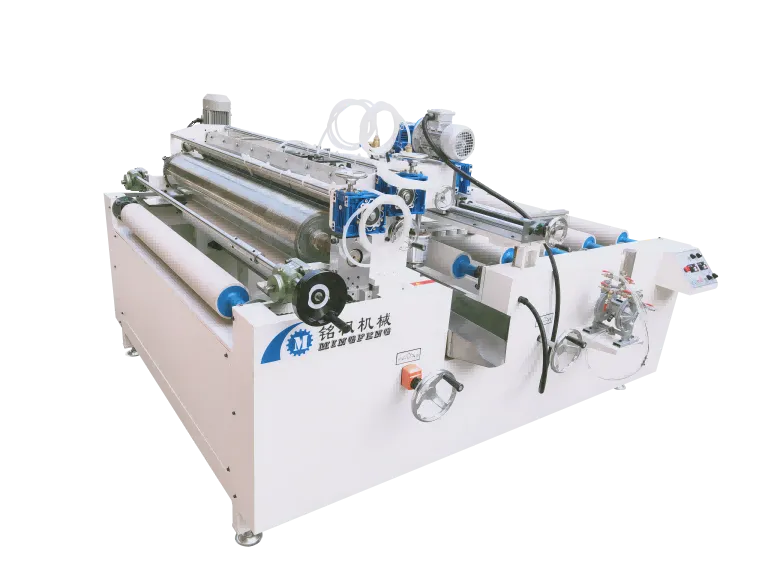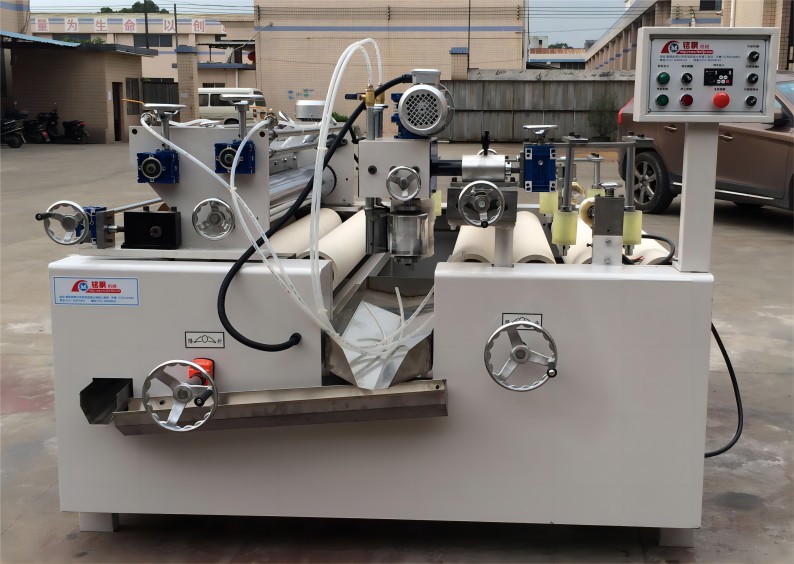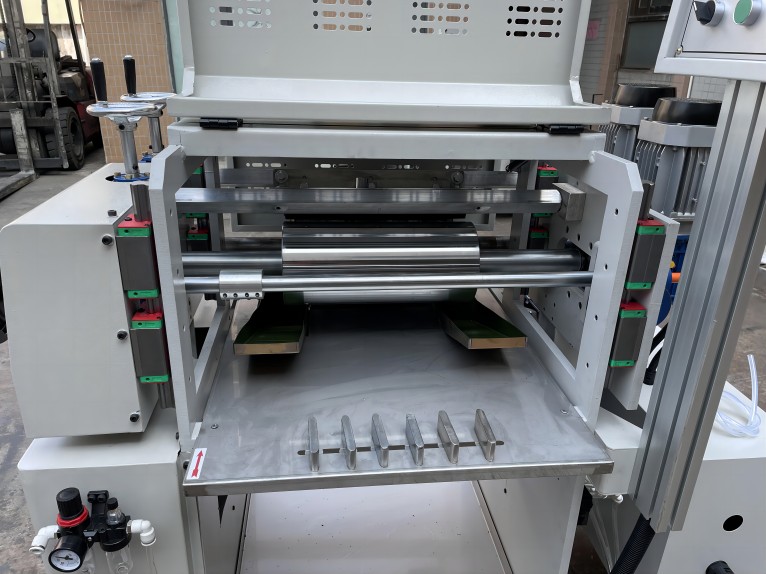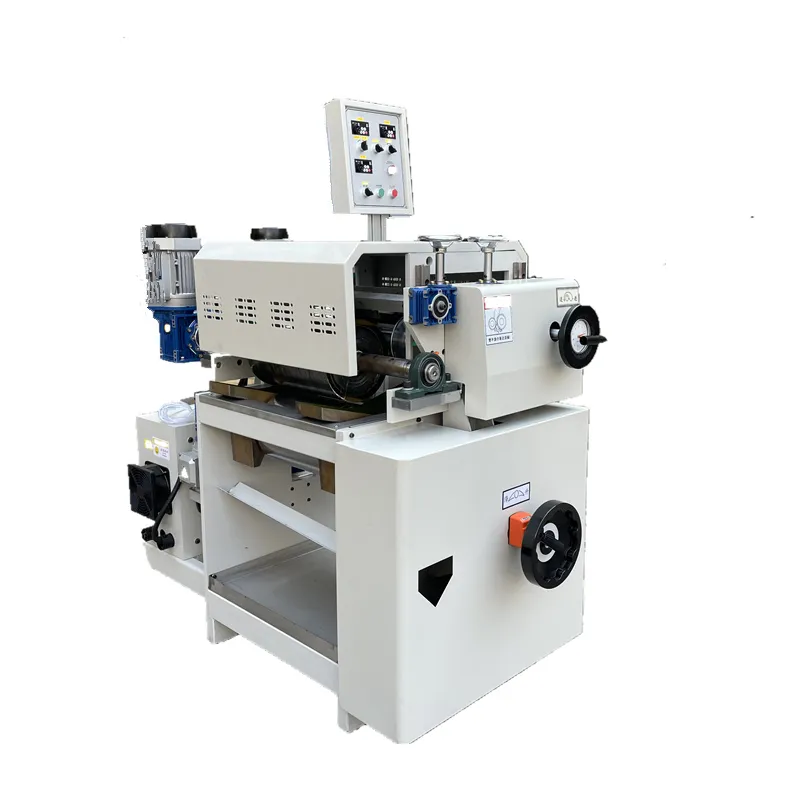In modern furniture manufacturing, decorative effects and cost control have become key factors influencing market competitiveness. Compared to traditional solid wood furniture, artificial boards with realistic wood grain effects, such as MDF, medium-density fiberboard, multi-layer board, plywood, and particleboard, are widely used due to their environmental friendliness, durability, and diverse design options. One of the key devices for achieving these simulated wood grain patterns is the furniture wood grain printing machine.
So, what is a furniture wood grain printing machine? How does it work? What types and components are there? What are its technical advantages and limitations compared to other decorative processing equipment? This article will provide an in-depth analysis from multiple perspectives, fully revealing the essence and application logic of this specialized equipment.

What is a furniture wood grain printing machine?
A furniture wood grain printing machine, also known as wood grain decorative printing equipment, is a specialized printing device specifically designed to transfer wood grain patterns onto artificial boards or wooden components on furniture surfaces using ink or paint. Its core function is to achieve simulated wood grain image processing on the surface of furniture components through mechanized and automated methods, achieving decorative, aesthetic, realistic, and value-added effects.
This equipment is widely used by furniture manufacturers in the production of panel products, including cabinet doors, wardrobe backs, bookshelves, partitions, door moldings, skirtings, wall panels, and more.

How does a furniture wood grain printing machine work?
The basic operating principle of a furniture wood grain printing machine is to continuously print a wood grain pattern onto the substrate surface using a set pattern template or digital image. Combined with post-processing processes such as drying and curing, the pattern adheres firmly and creates a three-dimensional, natural wood grain effect.
Wood grain printing machines based on different technical principles vary slightly, but the core process generally includes the following steps:
• Material feeding: The polished and cleaned board material is fed into the printing area via a conveyor system;
• Pattern printing: The wood grain pattern is applied to the substrate surface using a flexible roller, inkjet head, or stencil printing system;
• Ink curing/drying: The ink is quickly dried using UV curing, hot air drying, or infrared heating;
• Lamination/varnishing (optional): A clear coating can be applied to improve surface wear and moisture resistance;
• Material collection: The printed material is automatically transported to the receiving area or to the next process.
What are the types of furniture wood grain printing machines?
Based on their operating principles and structural features, furniture wood grain printing machines can be divided into the following categories:
1. Rubber Roller Printing Machine
This is the most common traditional printing method. It uses a rubber roller engraved with the wood grain pattern. The pattern is transferred through inking and rolling. It is suitable for large-scale, fixed-pattern production.
• Advantages: Low cost, stable printing, suitable for single-color wood grain printing;
• Disadvantages: Fixed pattern, changing the roller is required to change the pattern, and lacks flexibility.
2. Gravure Printing Machine
Uses a gravure roller to apply ink to the substrate surface, resulting in a delicate and refined pattern. Suitable for large-scale reproduction of fine wood grain patterns.
• Advantages: Clear images and natural color transitions;
• Disadvantages: High cost of engraved rollers and relatively limited application range.
3. Digital Inkjet Wood Grain Printer
Uses industrial inkjet technology to apply a digital wood grain pattern to a surface, making it a relatively advanced machine.
• Advantages: No plate making required, variable patterns, and automatic color matching;
• Disadvantages: High equipment cost and slower speed compared to traditional methods.
4. Heat Transfer Wood Grain Printing Machine
The wood grain pattern is pre-printed on a transfer film and then transferred to the substrate surface using heat and pressure.
• Advantages: Clear patterns, suitable for three-dimensional, custom-shaped parts;
• Disadvantages: Low efficiency, suitable for partial decoration or customization.

What are the components of a furniture wood grain printing press?
Although the details vary significantly between different types of equipment, a standard furniture wood grain printing press generally includes the following core components:
1. Feeding system: Transports the substrate and ensures accurate positioning;
2. Printing unit:
• For traditional printing, this includes anilox roller, doctor blade, and plate cylinder;
• For digital inkjet, this includes the printhead array and ink supply system;
3. Ink system: Controls ink flow, pressure, viscosity, and temperature;
4. Drying/curing system:
• UV lamps for ultraviolet curing;
• Hot air or infrared for drying solvent-based inks;
5. Control system: Adjusts speed, printing tension, temperature, and pattern matching;
6. Receiving system: Delivers the printed board in a flat, even state.
Why use a furniture wood grain printing press?
Benefits of using a furniture wood grain printing press:
1. High Fidelity
2. Excellent Cost Control
3. Strong Batch Stability
4. Environmentally Friendly Process
5. Compatible with a Diverse Range of Panel Materials
1. High Fidelity
The realistic wood grain pattern is a major advantage of furniture wood grain printing presses. Through high-definition engraving cylinders or digital image control, the textures of a variety of natural woods, such as walnut, oak, teak, and ash, can be meticulously simulated, resulting in a surface finish that closely resembles real wood.
2. Excellent Cost Control
Compared to solid wood, using artificial wood grain printing technology significantly reduces material costs, shortens the process, and improves processing efficiency.
3. Strong Batch Stability
Mechanical control ensures high pattern repeatability and minimal color variation, eliminating the deviations often associated with manual drawing, making it particularly suitable for large-volume orders.
4. Environmentally Friendly Process
Many modern wood grain printing presses use UV inks or water-based eco-friendly inks and are equipped with exhaust gas treatment systems, complying with regulations while minimizing environmental impact.
5. Compatible with a Variety of Panel Materials
It is suitable for various types of man-made panels (MDF, particleboard, plywood, density fiberboard, etc.) and wooden surfaces. It can also be used in special applications with materials such as metal and plastic.

Comparison between Furniture Wood Grain Printing Machines and Other Surface Decoration Processes
Processing methods | Surface Effects | Cost Control | Productivity | Fit range | Environmental performance |
| Furniture wood grain printing machine | Highly realistic wood grain | Excellent | High | Wide | Excellent |
| Veneer veneer | Highly realistic | High | Medium | Medium | Poor |
| PVC film | Medium realistic | Medium | Medium | Medium | Fair |
| Spray painting (imitation wood grain) | Limited realistic | Medium | Low | Variable | Medium |
In summary, furniture wood grain printing machines offer cost advantages and production flexibility while maintaining decorative effects, making them one of the most popular wood grain decoration methods.
What should you pay attention to when using a furniture wood grain printing machine?
1. Substrate Surface Treatment
Before printing, the substrate must undergo pre-treatment steps such as sanding, dust removal, and primer. Failure to do so will affect ink adhesion and image clarity.
2. Ink Selection
Different printing machines are compatible with different inks, such as UV ink, water-based ink, and solvent-based ink. Ink selection must be compatible with the drying system, taking into account adhesion and environmental requirements.
3. Temperature and Humidity Control
Ambient temperature and humidity significantly affect ink drying and image quality. Maintaining a constant temperature and humidity in the printing workshop is crucial.
4. Regular equipment maintenance
Operations such as drum cleaning, printhead maintenance, and ink supply system testing are critical to maintaining consistent print quality.
What industries do XMF Machinery’s products serve?
Our machinery caters to a broad range of industries, such as furniture manufacturing, door production, flooring, calcium silicate board processing, plastics, glass, metalwork, and ceramics. As a trusted coating equipment manufacturer, we provide machinery optimized for various materials and coating techniques, ensuring high-quality finishing at low operational costs, making us a leading supplier in these sectors.
